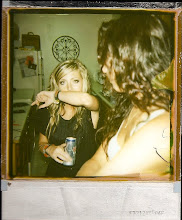- Films like "Raiders of the Lost Ark" and "Star Wars" are used to "as rememberances of things passed, of comic books and serials, and of times of which it is said that good and evil were sharply cleaved." Raiders of the Lost Ark is not a Replica of a B cliff-hanger...Rather it is the filmmaker's reverie on the glorious old days; if it has more action and adventure than Tim Tyler ever saw, then memory has worked its magic, heightening the excitement of Raiders' potboiler prototypes so that they are finally as breathtaking as we want to remember them" (62).
- Steven Spielberg is known for his use of allusions, "especially of cartoons." "His flying saucers zip along the highway like Road Runner...[w]hile the endings of both Close Encounters and Raiders feed off the "Night on Bald Mountain" sequence of Fantasia in order to swathe their supernaturals in Disneyesque wonderment" (67).
- As referenced in Paul Schrader's Assault on Precinct 13's the scene in which "the cop in a tight predicament, has no alternative but to trust the outlaw," can be seen as a memorialization of a symbol of "mystic male bonding that cements the Hawksian brotherhood." Also the filmmaker Hawks's theme of "professionalism" is memorialized in many films. For example in "Walter Hill's alterations of Alien, culled in large part from The Thing, unambiguously show his indebtedness to Hawks. And some of his own films, like The Driver, only appear to make sense in the light of Hawsian cult of the professional...The protagonist has no psychological motivation other than the need to prove that he is the best at what he does." To Hawks, "the ultimate personal reality is skill." And in Hill's, The Driver, "[i]f, however, we keep Hawks in mind, we can at least begin to answer the question, "Why does the driver do what he does?" by saying with the accumulated profundity of feeling allowed us by Hawks's criticism, "Because it's his job."
--I am going to attempt to answer the question about how The Godfather, Part II's stylistic choices could be recognized in the same sort of way as the films Noel names in her article as the "style as symbol category that revive film noir as a means of commenting on their dramatic material..."
- In the article it states that "what the composition of film noir was said to express can now be appropriated simply by dimming your lights and tightening your framing." Also, in the example given of how the film Blue Collar's "images grow ominously dark while the story still seems comic and high-spirited...the stylistic reference turns out to have been a premonition of things to come."
- As in The Godfather, Part II, there is a distinct use of extremely dark lighting and even the fact that the film was pushed 1 stop to create the "brown and black" look could be a premonition of the dramatic and dark things that happen throughout the film. It at least somewhat looks like a film noir film.
To be continued...

2 comments:
Good job. Noel is a he, incidentally (he was a professor of mine back in Madison).
You did fine on the GF II question...noir lighting has the connotation of "dark things" that applies to the crime/plotting scenes. But you also might think about the effect of having domestic/family scenes in Michael's den lit that way.
oops, I'm not sure why I wrote that he was a she. sorry!
Post a Comment